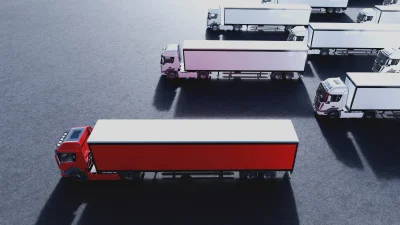In today’s competitive landscape, every business maneuver is critical and the fleet management market is no different.
Market valuation on the rise
As per a recent report from Research And Markets, the global fleet management system (FMS) market achieved a valuation of US$ 23.8 billion in 2022, and the upward trend doesn’t end there.
The market is expected to reach a staggering US$ 43.1 billion valuation by 2028. This is a steady growth rate of 10.5% over the next five years, which shows a consistent increase in value by 2028.
Leveraging technology for better operational efficiency is fast becoming the standard rather than an exception, as can be seen by the recent financial boom. This is due to tech-driven strategies optimizing vehicle operations, enhancing cost-efficiency, and driving substantial market growth.
ALSO READ: Reduce costs and increase efficiency with route optimization with Locate2U
Technological strategies fueling growth
Fleet management systems have become indispensable tools for businesses with a fleet of vehicles to manage – spanning across sectors from automotive and energy to manufacturing, logistics and more.
Think of the infusion of artificial intelligence (AI) and machine learning (ML) into fleet management as adding a smart assistant to an already well-oiled machine. The smart assistant (powered by AI and ML), sifts through mountains of data to pick out nuggets of actionable insights – a task that would take a human days, if not months, to complete.
Just as a skilled detective would find clues in a sea of information, AI and ML could use data to identify patterns and find solutions to improve fleet management. Think of this in terms of bolstering core functionalities, such as improving real-time tracking, mechanical diagnostics, driver behavior analysis, fuel-saving measures, and so much more.
So, how could this lead to a forecasted financial boom to US$43 billion?
Utilizing tech for financial growth
The report shows how the rapid integration of AI and ML could drive that steady Compound Annual Growth Rate (CAGR) of 10.5% over the next five years.
These technologies could address driver safety concerns, reduce vehicle maintenance costs, and maximize profitability by identifying money-hemorrhaging issues.
In other words, AI and ML could be deployed to process vast amounts of data and drastically enhance operational efficiencies.
ALSO READ: UPS uses automation to handle repetitive tasks
AI and the future of fleet
The shift from manual to machine-driven fleet management is a sign of the times. It shows us how AI and ML are becoming vital cogs in modern-day business operations. And while the market growth looks good on paper, let’s not forget the human aspect behind the numbers.
These advancements will redefine the daily grind of thousands of employees across various sectors. From the dispatcher at the office to the driver, the ripple effect will usher in a financial boom, yes, but also a new era of efficiency and safety.
As the industry steers towards this tech-driven future, the possibilities are as endless as the open road.
ALSO READ: Just Eat makes ordering faster with new AI assistant
About the author
Cheryl has contributed to various international publications, with a fervor for data and technology. She explores the intersection of emerging tech trends with logistics, focusing on how digital innovations are reshaping industries on a global scale. When she's not dissecting the latest developments in AI-driven innovation and digital solutions, Cheryl can be found gaming, kickboxing, or navigating the novel niches of consumer gadgetry.












